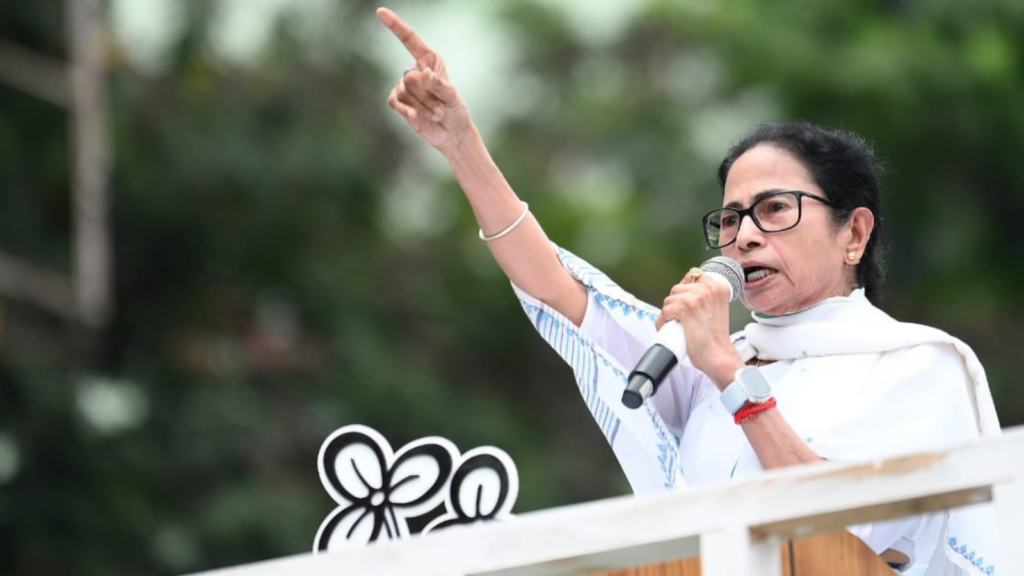KolkataJul 21, 2025 17:53 IST
First published on: Jul 21, 2025 at 17:51 IST
On July 21 every year, the Trinamool Congress (TMC) and its chief Mamata Banerjee mark “Shaheed Diwas” (Martyrs’ Day), holding a mega rally in the heart of Kolkata, which outlines their roadmap for the coming months.
This time, while addressing the Martyrs’ Day rally Monday, Banerjee, the West Bengal Chief Minister, has set the tone for the Assembly polls slated for early 2026. She accused the BJP of allegedly unleashing “linguistic terrorism” against Bengalis, asserting that the fight for identity and language will continue till the BJP is defeated.
“There will be a language movement against the BJP’s terrorism on the Bengali language… From July 27, the language movement will start in West Bengal in protest against attacks on Bengalis,” Banerjee thundered before a massive gathering at the rally venue in central Kolkata.
“We have to win more seats in the 2026 Assembly polls, and then march to Delhi to defeat the BJP,” the CM said.
Significance of July 21
On July 21, 1993, the Bengal Youth Congress, led by Mamata Banerjee who was then with the Congress, organised a “Writers’ Abhijaan” (march to Writers’ Building, a colonial building that was the seat of the state secretariat) with the demand to make voter ID cards mandatory for voting. The Congress raised this demand to put an end to the alleged rigging of polls by the then CPM-led Left Front government.
Veteran TMC MP Saugata Roy, who participated in that 1993 march, recalled that thousands of Youth Congress workers gathered at five different points in Kolkata before starting the march towards Writers’ Building. But Jyoti Basu, the CM at the time, had announced that he would not allow the Youth Congress workers to lay siege on the state secretariat – and the government imposed prohibitory orders to quell the demonstration.
As one of the Youth Congress processions approached the Writers’ Building from the Mayo Road area, the police stopped it and a scuffle broke out. A few of the protesters started throwing stones and the police responded with a baton charge. As the protest kept gaining momentum, the police, afraid they would be outnumbered, opened fire and killed 13 Youth Congress workers.
“Since July 21, 1994, the first anniversary of the deadly clash, Mamata Banerjee has held an annual rally in central Kolkata to commemorate the 13 young men killed on July 21, 1993. Since the formation of the Trinamool Congress on January 1, 1998, the July 21 rally has been the biggest day in the annual calendar of the party,” political scientist Sumantra Bose wrote in his book Transforming India: Challenges to the World’s Largest Democracy.
In her memoir, My Unforgettable Memories, Banerjee writes that “all of us were bashed up black and blue”. “I took most of the blows on my abdomen and around the waist. It was so bad that I had to go in for surgery and all through 1994–95 I used to ride in Bappan’s Ambassador because I had to wear an orthopaedic belt,” she wrote.
“It is the day when we remember and offer our respect to the hundreds of people who are fighting death every day, whose lives are a living death, who have lost life and limb in this struggle. For us, it is a day of sorrow and shame. It is a day all of us come together so we started organising district conventions with Trinamool workers,” Banerjee added.



